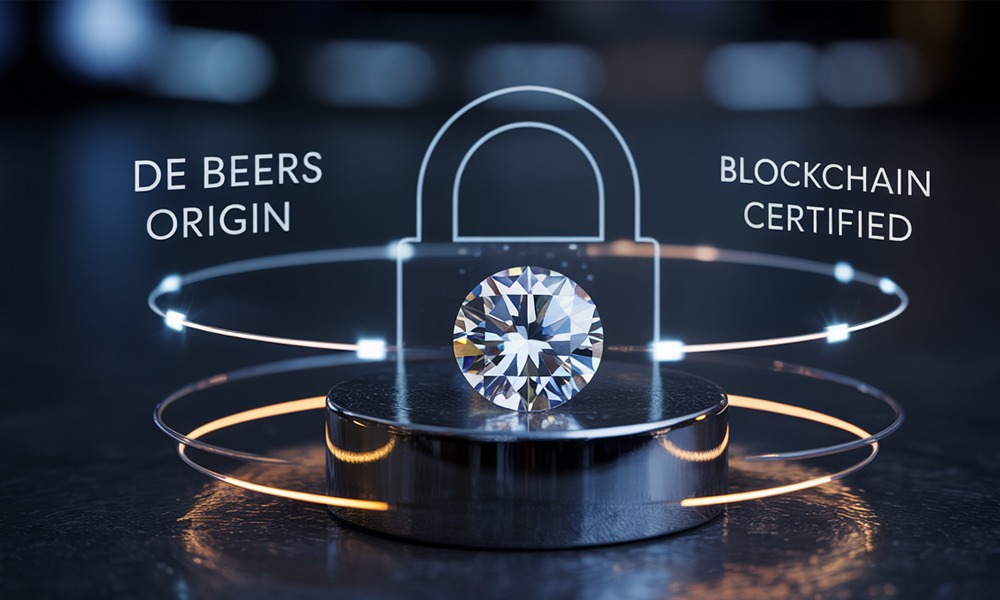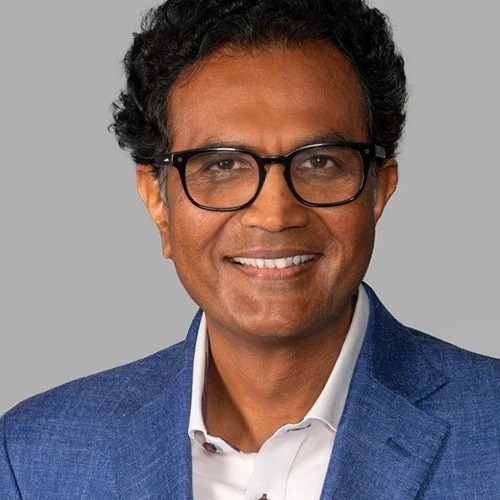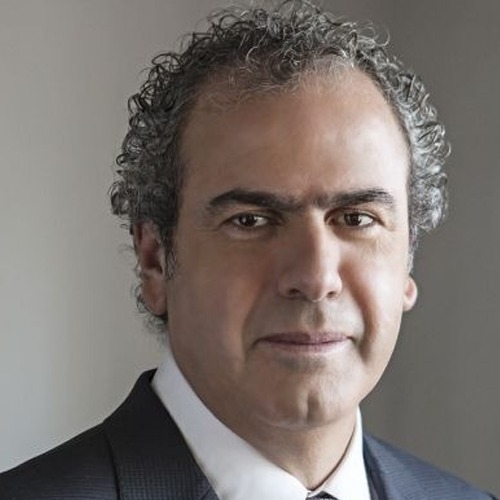DiamondBuzz
The New Diamond Dilemma: Why Advanced Certification is the Key to Industry Integrity
By Ramit Kapur, MD, Gemological Science International (GSI)

The diamond industry stands at a critical juncture. In recent years, technological advancements in diamond synthesis have reached unprecedented levels, pushing the industry into a new era where distinguishing between natural and man-made diamonds has become increasingly complex. As production scales up, the quality of these diamonds is also improving, making traditional identification methods insufficient.
This evolution brings both opportunity and challenge. While the industry has embraced innovation, it must also address a pressing concern: ensuring absolute transparency at every stage of the supply chain. The risk of undisclosed mixing has never been higher, making rigorous certification no longer just a safeguard but an absolute necessity.
The Silent Challenge of Undisclosed Mixing
Unlike the past, where visual and basic spectroscopic assessments could easily differentiate natural diamonds from their counterparts, today’s landscape demands a far more advanced approach. New-generation diamonds are engineered to exhibit characteristics nearly identical to those of natural diamonds, making detection a sophisticated scientific endeavor.
Contamination; whether accidental or deliberate, can occur at multiple points in the supply chain. From loose sorting, bagging to jewelry manufacturing, from wholesale distribution to retail, an undisclosed stone can enter at any stage. Even a single instance of an undetected mix-up can erode consumer confidence and jeopardize the credibility of a business. For retailers, the challenge is clear: without a verified certification from a reputable gemological laboratory, there is always a room for doubt of what they are purchasing.
For decades, the 4Cs; Cut, Color, Clarity, and Carat weight, were the industry’s gold standard for determining a diamond’s value. However, while these parameters still hold fundamental importance, they do not address the crucial question of authenticity of the nature of origin. In an environment where sophisticated processes are used to create diamonds that look, feel, and test like natural stones under conventional methods, reliance on legacy techniques and stereotypical thought processes is no longer sufficient.

Labs Beyond Traditional Grading:
This is where gemological laboratories play a decisive role. A laboratory’s function today goes far beyond grading; it is about continuous research, technological innovation, and investment in cutting-edge detection capabilities. The methods that were effective yesterday will not be enough tomorrow. Laboratories must remain ahead of the curve, upgrading methodologies, instruments, and expertise in real-time.
The Need for Constant Evolution in Laboratory Science
At GSI, we recognize that the industry’s ability to maintain transparency hinges on the gemological community’s ability to evolve. As detection challenges grow, so do our efforts to stay ahead.
Investing in state-of-the-art instrumentation is not a one-time effort; it is an ongoing commitment. New techniques demand new solutions, and old detection methods quickly become obsolete. As the industry progresses, our labs must not only adopt the latest technologies but also develop pioneering research to stay one step ahead.
This is why at GSI, our facilities are equipped with the world’s most sophisticated diamond detection instruments, designed to analyze, verify, and certify with absolute precision. We work closely with industry partners, scientific research institutions, and technology developers to ensure that we are at the forefront of gemological advancements.
Retailers: The First Line of Consumer Protection
For retailers, advanced certification is more than a formality; it is a responsibility. Consumer trust is fragile, and in an age where buyers are more informed than ever, transparency is non-negotiable. A diamond with an undisclosed identity can severely impact business credibility, making independent verification through a trusted laboratory indispensable.
Here’s why comprehensive certification is essential for every retailer:
- Absolute Authenticity: Ensures diamonds are precisely what they are represented to be, eliminating any risk of misrepresentation and contamination.
- Regulatory Adherence: With global authorities tightening disclosure norms, compliance is no longer optional.
- Consumer Confidence: Buyers rely on retailers for assurance; a certified diamond reinforces their trust in the purchase.
- Industry Integrity: Prevents undisclosed mixing, preserving the credibility of businesses and the market at large.
The diamond industry is built on trust. As innovations in diamond production continue to advance, the need for transparency will only intensify. The responsibility to uphold this integrity does not rest with laboratories alone: retailers, wholesalers, and manufacturers must collectively prioritize certification as a fundamental business practice.
At GSI, we are committed to supporting the industry through scientific precision, technological advancement, and a dedication to detection excellence. Our goal is simple: to ensure that every diamond reaching a consumer is exactly what it claims to be.
For retailers, the message is clear: certification is not just a step in the process; it is the foundation of a credible and successful business. Ensuring that every piece of jewelry is independently verified is not just about safeguarding transactions; it is about safeguarding trust, the most valuable asset in the diamond industry.

DiamondBuzz
De Beers Unveils ‘Origin’: Blockchain-Backed Diamonds for a New Era of Transparency and Trust

De Beers Group has officially launched Origin, a pioneering initiative that brings blockchain technology to the heart of the natural diamond trade, offering consumers an unprecedented level of traceability, authenticity, and ethical assurance.
Each diamond in the Origin collection is individually verified and traceable, allowing customers to follow its journey from deep earth formation to expert craftsmanship and final retail presentation. The initiative is powered by tamper-proof blockchain technology, ensuring a secure and transparent record of each diamond’s provenance.
“As a brand, we understand that modern consumers value not just beauty, but also trust and purpose,” said De Beers during the launch. “Origin is our vision for a diamond industry that is transparent, ethical, and built on authenticity.”
The Origin platform not only affirms the diamond’s natural origin but also highlights its social and environmental impact—detailing the positive contributions made in the local communities where the stones are mined.
A Retailer-Ready Revolution
For retail partners, Origin offers more than just ethically sourced brilliance. It comes bundled with:
- Experiential merchandising solutions
- Custom marketing assets
- Retail staff training tools
These assets are designed to connect with today’s values-driven consumers, who seek deeper meaning and verified ethical sourcing in luxury purchases.
Origin also integrates seamlessly into retailers’ loose diamond portfolios, offering flexibility alongside elevated consumer confidence in the integrity and ethical story behind every stone.
The launch aligns with De Beers’ broader mission to lead the natural diamond industry toward a more responsible, transparent, and future-ready standard—where luxury is inseparable from accountability.
DiamondBuzz
Diamond Market Rebounds in 2025; India Emerges as Global Growth Engine

The global diamond industry is showing signs of revival in 2025, following two years of sluggish demand. According to Susan Jacques, President and CEO of the Gemological Institute of America (GIA), the gem and jewellery sector faced significant headwinds after a brief boom in 2021, which was fueled by pandemic-era shifts in consumer spending and travel behavior.
While 2022 saw strong pricing and demand, a downturn took hold through 2023 and 2024. Now, a renewed sense of optimism is emerging. “The recovery was expected, and we’re beginning to see positive momentum return,” Jacques noted.
A key driver of this rebound is India, whose cultural affinity for diamonds continues to underpin strong consumer interest. Over the past two decades, India’s share of global diamond demand has surged from just 2% to nearly 11%, positioning it as the world’s second-largest market for natural diamonds—trailing only the United States, which remains dominant with around 55% of total sales.
Pritesh Patel, Senior Vice President and Chief Operating Officer at GIA, remarked that the US market has remained stable in early 2025, and industry stakeholders are optimistic about sustained demand. In India, he observed a notable shift: interest in diamonds is expanding well beyond major metropolitan areas.

“Tier-2 and tier-3 cities are now driving growth, alongside established hubs,” Patel said. He added that demand is strong across India’s southern, northern, and western regions, signaling a broad-based recovery in diamond jewellery purchases.
The global industry is cautiously optimistic as it navigates 2025, buoyed by emerging markets and a renewed appetite for luxury adornments.
DiamondBuzz
WFDB Applauds Luanda Accord Backing Natural Diamond Promotion

The World Federation of Diamond Bourses (WFDB) has expressed strong support for the Luanda Accord, an agreement among major diamond-producing nations and trading hubs to bolster the global promotion of natural diamonds. Under the accord, all signatories will contribute 1% of their annual rough diamond revenue to the Natural Diamond Council’s marketing efforts.
Signed in Luanda, Angola, the accord brings together key industry players, including Botswana, Angola, Namibia, South Africa, Sierra Leone, the DRC, and organizations such as the Antwerp World Diamond Centre, Dubai Multi Commodities Centre (DMCC), India’s Gem & Jewellery Export Promotion Council (GJEPC), and the African Diamond Producers Association.
The agreement follows the WFDB Presidents’ Meeting in New York, where consensus was reached on the urgent need to unite in support of natural diamonds. Industry leaders such as Botswana President Duma Boko, Angolan Minister Diamantino Azevedo, De Beers CEO Al Cook, and DMCC Executive Chairman Ahmed Bin Sulayem were in attendance.

WFDB President Yoram Dvash commended the initiative and particularly praised signatories DMCC and GJEPC, stating, “I am very gratified to see the mobilization of the global diamond industry to promote natural diamonds. As I said at the Presidents’ Meeting, now is the time to lead with unity to protect the value and legacy of the natural diamond. United, we will remind the world why a natural diamond will always be forever.”
The WFDB also launched its own natural diamond video campaign, encouraging members to amplify the message through social media.
-

 BrandBuzz3 months ago
BrandBuzz3 months agoMia by Tanishq Unveils ‘Fiora’ Collection This Akshaya Tritiya: A Celebration of Nature’s Blossoms and New Beginnings
-

 National News2 months ago
National News2 months agoEmmadi Silver Jewellery Launches First Karnataka Store with Grand Opening in Bengaluru’s Malleshwaram
-

 GlamBuzz2 months ago
GlamBuzz2 months agoGokulam Signature Jewels Debuts in Hyderabad with Glamorous Launch at KPHB
-

 DiamondBuzz2 months ago
DiamondBuzz2 months agoDe Beers CEO: confident the US will exempt diamonds from reciprocal tariffs











